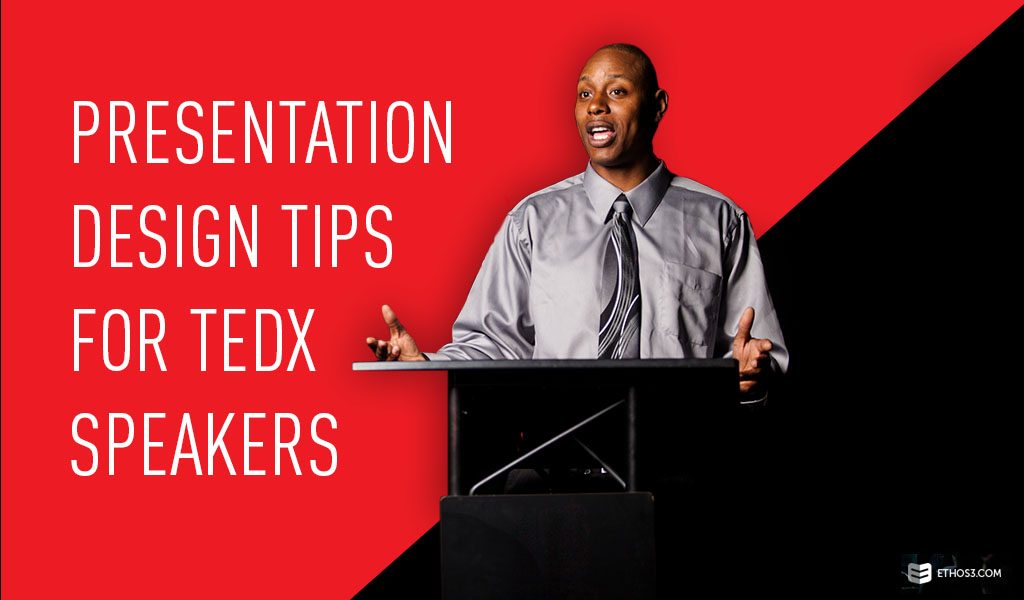It’s no secret that TED Talks are known for being particularly inspiring, gripping, and engaging. And that’s most definitely not an accident.
The most effective TEDx speakers enlist a few basic techniques that ensure their message connects, compels, and motivates the audience, which we just so happen to be privy to.
If you’re looking to design a TEDx presentation that will resonate with your audience now and well into the future, be sure to integrate these critical techniques into your design.

Condense Your Message to One Sentence
One area where folks tend to go off the rails in presentations is trying to say too much about too many things. What makes TED Talks so effective is that they always deliver clear, concise messages in digestible packages.
If you want to be sure what you’re presenting is pointed and clear, then work on distilling your presentation’s message into one sentence. Once you do that, you can refer back to that sentence whenever you question whether your design is straying too far from your primary message.
Spend Time on the Introduction and Conclusion
Of course, you want to carefully prepare for every minute of your presentation, but it’s in your best interest to spend the most time preparing an engaging introduction and conclusion.
Your introduction is the audience’s first impression of you and can make or break whether they pay attention, so you want to be sure it’s conversational, welcoming, and relatable. Meanwhile, your conclusion brings home what you want your audience to leave with, so it should focus on the most inspiring and motivating elements of your message.
Tap Into Your Vulnerability
The best presentations are those that make the audience feel a deep, personal connection to both the message and the person presenting it. A surefire way to cultivate that connection is to infuse your presentation with a bit of vulnerability.
To be vulnerable means to present your most authentic self, even if it involves sharing your flaws and failures to make a narrative more personal and compelling. It might feel scary or intimidating, but vulnerability is one thing we all have in common, so a willingness to share yours is a no-fail way to instantly connect to your audience.
Illustrate Your Story With Facts and Figures
If you’re designing a TEDx presentation, then you probably don’t need us to tell you the importance of telling a story with it—it’s no surprise that stories are more interesting and persuasive than hearing a bunch of facts and figures.
That said, supplementing your narrative with hard facts and figures via data visualizations is a critical technique that will help to legitimize your message and add valuable context while balancing out the emotional aspect of your story. In fact, according to a study from Cornell University, 97% of people will believe a claim if it’s backed by a graph or chart compared to only 68% who will believe the claim if it’s not supported with a visual.
Cultivate Your Presence Through Preparation
Audiences have a tendency to mirror those presenting to them. If you walk on stage feeling preoccupied with what’s about to happen and what you’re about to say, your audience is likely to feel preoccupied, too.
On the other hand, if you prepare extensively (about an hour for every minute you’re presenting) and feel confident about the message you’re delivering, you can instead focus on feeling engaged and present in the moment. And the more engaged and present you are, the more engaged and present your audience is likely to be.